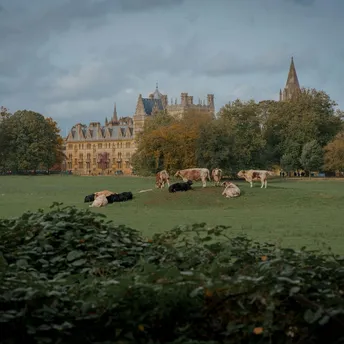Why the Scottish Highlands is the Best Birdwatching Destination in the UK

A visit to the Scottish Highlands offers one of the best bird and wildlife-watching experiences in the UK, promising rare encounters with unique species. The region, particularly the Cairngorms National Park and Spey Valley, is renowned for its rich avian diversity and stunning landscapes.
The Scottish Highlands, especially the Cairngorms National Park, is a birdwatcher’s paradise. This national park is home to species that are rare or absent elsewhere in the UK, including the majestic golden eagle, elusive capercaillie, tiny crested tit, and three high mountain specialists: ptarmigan, dotterel, and snow bunting. Spotting these birds requires hiking through mountains, valleys, and forests, offering a combination of birdwatching and breathtaking scenery.
The Mountains
The Cairngorm Plateau, the UK’s only ‘arctic-alpine’ habitat, hosts several high-altitude species. The ptarmigan, adapted to year-round mountain life, is known for its excellent camouflage, changing plumage with the seasons. Birdwatchers can also find snow buntings and dotterels, which breed in this unique environment. Dotterels, migrating from North Africa, are notable for their role-reversal breeding behavior, where males incubate eggs and care for chicks.
A day's birdwatching on the Cairngorm Plateau may yield sightings of red grouse, meadow pipit, wheatear, ring ouzel, and golden eagle, alongside the mountain specialists. The combination of unique bird species and stunning mountain scenery makes for a rewarding experience.
Forests and Woods
Below the plateau, Scots pine and birch forests are rich in wildlife. Early morning visits enhance the chances of spotting birds such as coal tits, treecreepers, goldcrests, and the unique crested tit. Bird feeders in car parks provide close-up views of siskins, chaffinches, and various tit species.
The forests are also home to the elusive capercaillie, the largest grouse species, whose numbers have declined, making sightings rare and valuable. The birch woods, with their distinct ecosystem, host willow warblers, which migrate from Southern Africa to breed.
Rivers and Lochs
The River Spey and its surrounding valley, known as Strathspey, are rich in birdlife. The river is home to dippers, grey wagtails, and common sandpipers. Goldeneyes, once winter visitors, now breed in the area, providing year-round sightings of these distinctive ducks.
Nearby lochs are habitats for black-throated divers and Slavonian grebes. Raptors such as golden and white-tailed eagles are frequently seen overhead, and ospreys, which returned to the area in the 1950s, are a common sight hunting fish from April to August.
The Coast
The coast near Spey Bay, Black Isle, and the Moray Firth offers diverse birdwatching opportunities. Ducks, geese, and waders are abundant, especially during winter and migration periods. Eiders, greylag, and pink-footed geese, along with waders like dunlin, sanderling, curlew, and redshank, can be observed in large flocks. Offshore, birdwatchers can spot gulls, terns, divers, guillemots, and razorbills.
Other Wildlife
Beyond birds, the Highlands are home to red squirrels, pine martens, mountain hares, and red deer. Observing wood ants on the forest floor provides another fascinating glimpse into the region's diverse ecosystem.
With its rich birdlife, stunning landscapes, and additional wildlife, the Scottish Highlands stands out as the premier birdwatching destination in the UK. Whether you are a seasoned birdwatcher or a nature enthusiast, the Highlands offer an unparalleled experience.



















